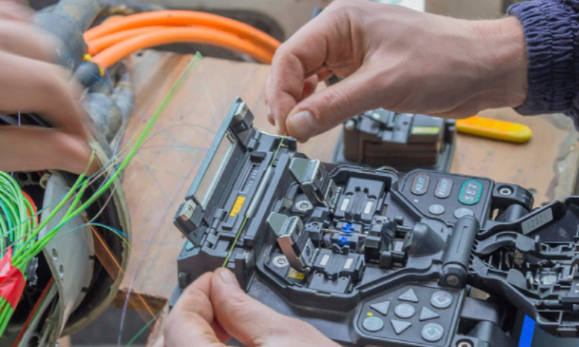Oufu Optical Fiber Cable Co.,Ltd
Address: Shenyang, Liaoning, China
Contact person: Manager Zhang
Phone: 400-964-1314
Mobile phone: +86 13904053308
【whatsapp && wechat】
2024-06-20 1394
How to Perfectly Splice Fiber Optic Cable: Tools, Techniques & Best Practices
Fiber optic cables have become the backbone of modern communication networks, enabling high-speed data transmission with minimal loss. Proper splicing of fiber optic cables is crucial for maintaining the integrity and performance of these networks. In this article, we will explore the tools, techniques, and best practices for perfectly splicing fiber optic cables.
 www.adsscable.cn
www.adsscable.cn
Essential Tools for Fiber Optic Splicing
To achieve a successful splice, you need a comprehensive set of tools. Here are the essential items you should have in your toolkit:
Fusion Splicer: This is the primary tool for fusing the ends of two fiber optic cables together. Choose a splicer that is compatible with your fiber type and meets your splicing requirements.
Fiber Cleaver: Used to precisely cut the fiber ends at a 90-degree angle, ensuring a smooth and flat surface for splicing.
Fiber Stripper: Removes the protective coating and jacket from the fiber, exposing the glass core for splicing.
Cleaning Wipes and Alcohol: Used to clean the fiber ends before splicing to remove any dirt or contaminants.
Visual Fault Locator (VFL) and Optical Power Meter (OPM): These tools are used to test the quality of the splice and detect any faults or losses.www.adsscable.cn
Techniques for Perfect Splicing
Preparation: Start by ensuring that your workspace is clean and dust-free. This is crucial to prevent contamination of the fibers. Clean your tools and equipment thoroughly before use.
Fiber Preparation: Use the fiber stripper to carefully remove the protective coating and jacket from the ends of the fibers. Then, use the fiber cleaver to cut the fibers at a precise 90-degree angle. Ensure that the fiber ends are clean and free of any dirt or debris.
Alignment: Place the prepared fibers into the fusion splicer. Adjust the splicer's settings based on the type of fiber you are using. The splicer will then align the fibers precisely for splicing.
Fusion Splicing: Initiate the fusion splicing process by pressing the start button on the splicer. The splicer will emit a high-intensity arc that melts the ends of the fibers together, forming a permanent bond. Monitor the splicer's display to ensure the splicing process is proceeding smoothly.
www.adsscable.cn
Testing: Once the splice is complete, use the VFL and OPM to test the quality of the splice. Look for any faults or losses and adjust the splice accordingly if necessary.
Best Practices for Fiber Optic Splicing
Use Quality Tools: Invest in quality tools and equipment that are designed specifically for fiber optic splicing. This will ensure accuracy, reliability, and long-term durability.
Follow Manufacturer's Instructions: Always follow the manufacturer's instructions and recommendations for your splicer and other tools. This will ensure that you are using the equipment correctly and achieving optimal results.
Maintain Cleanliness: Keep your workspace and tools clean and dust-free at all times. This will prevent contamination of the fibers and ensure a successful splice.
Regularly Calibrate and Maintain Your Tools: Regular calibration and maintenance of your splicer and other tools are crucial for maintaining their accuracy and performance.
Train and Certify Your Team: Ensure that your team members are properly trained and certified in fiber optic splicing techniques. This will ensure that they are capable of performing splices correctly and efficiently.
In conclusion, perfect splicing of fiber optic cables requires the use of quality tools, adherence to correct techniques, and adherence to best practices. By following these guidelines, you can ensure that your fiber optic splices are reliable, accurate, and long-lasting, ultimately contributing to the integrity and performance of your communication network.